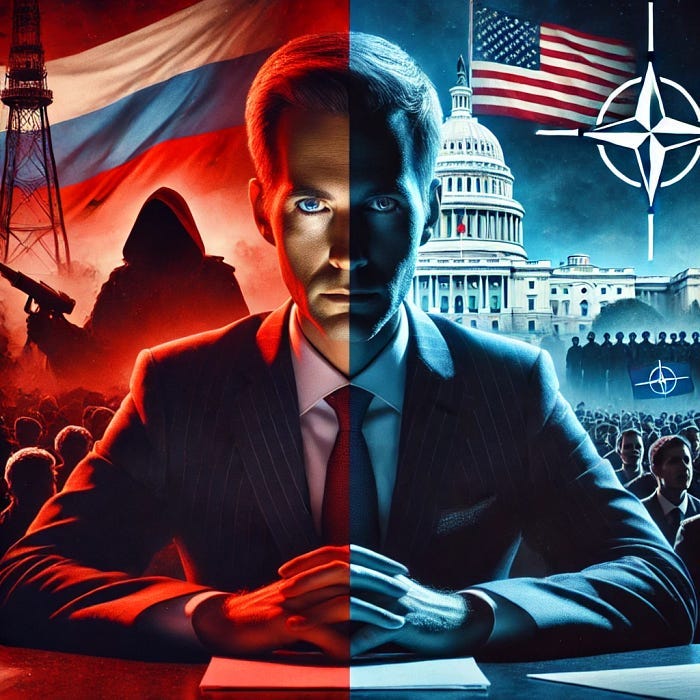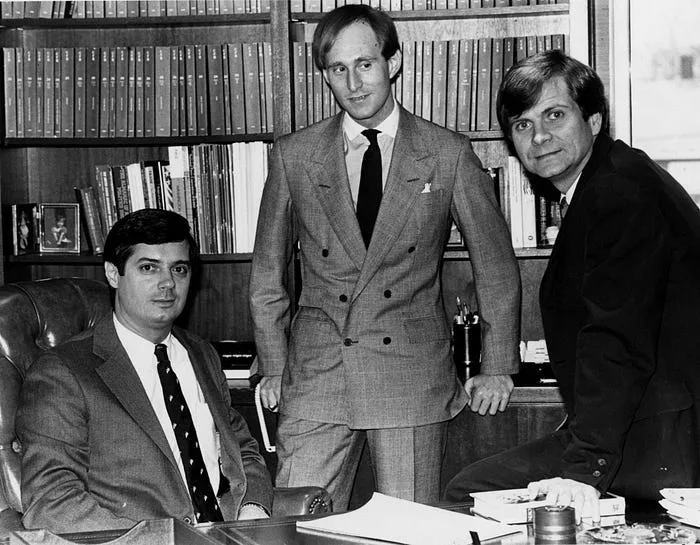A sweeping exposé on how hybrid warfare, authoritarian infiltration, and public apathy are pushing the world’s oldest democracy toward collapse — and what must happen before it’s too late.
Part 1:
Russia Cannot Afford Another Front — But They’re Betting They Won’t Have To
Despite its public displays of bravado, Russia is not in a position to take on NATO in a full-scale conventional war. The nation is facing escalating internal problems: mass desertions, plummeting morale among troops, and a crumbling economy besieged by sanctions and isolation. The war in Ukraine alone has stretched Russian military logistics, depleted munitions, and drained national reserves. Military analysts report increasing equipment cannibalization, troop fatigue, and supply chain chaos — none of which point to a nation prepared for a multi-front war.
And yet, paradoxically, the Kremlin continues to posture as though it’s ready for global confrontation.
Why? Because the Kremlin understands that brute military strength isn’t the only path to victory. In today’s complex geopolitical battlefield, perception, confusion, and strategic paralysis are equally potent weapons. Russia is wagering on a different kind of war — one that doesn’t require tanks or troop movements. It is betting that it can destabilize NATO from the inside, fracture its unity, and paralyze it politically — so thoroughly that NATO disintegrates before a single shot is fired.
This is not a fantasy — it’s a strategy. One that relies on decades of cultivating influence in Western democracies through media manipulation, political infiltration, and psychological operations. Russia’s greatest military advantage in the 21st century may not be its hypersonic missiles, but its ability to fracture the collective will of its enemies.
Subversion has become Russia’s most successful front. From supporting populist and extremist movements in Europe to fueling partisan division in the United States, the Kremlin has mastered the art of ideological sabotage. It doesn’t need to fire on NATO bases when it can get NATO allies to question their mutual obligations.
With America politically gridlocked and segments of its leadership echoing Kremlin talking points, the gamble might be working. Trump-aligned Republicans have increasingly questioned the value of NATO, some even threatening to withdraw from or defund it. The result? A weakened alliance, second-guessing its commitments, and uncertain of its future.
Rather than fight NATO, Russia is banking on breaking it — quietly, methodically, and from within. If successful, the Kremlin can reshape Europe’s security architecture on its terms, all while avoiding the costs of a direct confrontation it knows it cannot win.
This is the first front in the real war of the 21st century. And it’s being fought not with bombs, but with bots, ballots, and billion-dollar disinformation.
Part 2:
The Only Outcomes — Three Forks in the Road
As the geopolitical standoff escalates, there are three plausible paths that could define the next phase of this conflict. Each carries massive implications — not just for Europe and the United States, but for the entire world order.
Outcome 1: NATO Calls Russia’s Bluff
The first and most logical outcome is that NATO finally calls Russia’s bluff. With clear evidence that Russia is struggling economically and militarily, a united and assertive NATO stance could force the Kremlin into de-escalation. This doesn’t mean engaging militarily, but rather increasing military readiness, bolstering Eastern European defenses, and standing unequivocally behind Article 5 of the NATO charter.
This outcome hinges on political unity — especially from the United States. A full-throated reaffirmation of America’s NATO commitments would send a signal that the alliance remains intact, effective, and prepared. Russia’s fear of conventional conflict with NATO has always been rooted in its inferiority in terms of military scale, technology, and logistics. With its forces already overextended in Ukraine and with internal unrest growing, it is unlikely that Putin could afford to escalate further without triggering domestic collapse.
This scenario is bolstered by intelligence assessments like the U.S. Director of National Intelligence’s 2023 report, which noted that Russia’s operational capacity outside Ukraine is “critically diminished.” Should NATO act with resolve, Russia’s strategy of subversion could be neutralized before it metastasizes into actual war.
Outcome 2: Russia Uses Nuclear Weapons — And Guarantees Its Own Doom
The most alarming possibility is also the least likely: that Russia, cornered and unable to save face, escalates to nuclear conflict. The threat of nuclear use — especially tactical nukes in Ukraine or symbolic strikes — has remained a haunting backdrop to Russian rhetoric. But using such weapons would almost certainly trigger mutual destruction or, at the very least, a global pariah status that Russia could never recover from.
Nuclear use would likely fracture any remaining alliances, even with China and India, both of whom have historically urged non-escalation. It would invite a devastating military and economic response — not just from NATO, but potentially from a global coalition. Internally, it could spark a rebellion within Russia’s military or civilian sectors, who may view such a move as suicidal.
Former Russian officials like Mikhail Kasyanov and ex-oligarch Mikhail Khodorkovsky have suggested that the real deterrent isn’t NATO — it’s the Russian people, who would view nuclear escalation as a betrayal of their survival. The Kremlin is unlikely to risk this outcome unless Putin’s grip on power is in existential peril.
Outcome 3: Trump Aligns with Russia and Breaks NATO — But the U.S. Fights Back
Perhaps the most volatile outcome is a political one. If Donald Trump follows through on promises to reduce U.S. involvement in NATO — or worse, aligns overtly with Putin’s geopolitical aims — it could fracture the alliance without a single missile fired.
Trump’s history is well-documented: praising Putin, threatening NATO withdrawal, and even withholding military aid to Ukraine in exchange for political favors. His potential re-election poses a direct threat to NATO’s cohesion and would likely embolden Russia to push harder on its subversion tactics in Europe.
However, this scenario assumes the American public and political establishment will remain passive. And that’s far from guaranteed.
Should Trump cross that Rubicon — openly siding with Moscow against NATO — there would likely be a seismic backlash. U.S. civil society, intelligence agencies, and political opposition could unite in resistance. The military establishment, still largely pro-NATO, may view such alignment as a constitutional crisis.
Recent polling shows strong bipartisan support for NATO among the American public, with over 70% viewing the alliance as critical to national security. If Trump were to betray those interests, the reaction could be swift and unprecedented.
As with all authoritarian gambits, this final outcome rests on whether the people allow it. And America — divided though it is — may not be as willing to follow as Russia expects.
The world is holding its breath, watching to see which fork the U.S. and NATO take. The time for clarity, unity, and strategic courage is now.
Part 3:
What Has Happened to the United States of America?
How did the United States, once the undisputed leader of the free world, become a pawn in a foreign adversary’s information war? The answer lies not in a single event, but in a convergence of institutional decay, digital disinformation, and political complacency.
The American democratic system — built on checks and balances, a free press, and an informed electorate — has been under siege from within. Over the last two decades, the rise of partisan media, the collapse of civic education, and the flood of dark money in politics have created fertile ground for manipulation.
While Russia has long used active measures to disrupt foreign democracies, the 2016 and 2020 U.S. elections marked a watershed. Through hacked emails, social media psy-ops, and coordinated narrative engineering, Russian operatives sowed chaos, polarized communities, and undermined trust in institutions. But the truly damning reality is this: these campaigns succeeded not because they were sophisticated — but because the U.S. was already vulnerable.
Once fringe conspiracy theories now sit at the center of mainstream political platforms. Misinformation spreads faster than truth. President Donald Trump didn’t create this environment, but he exploited it masterfully — and in doing so, became a vessel for foreign strategic goals. His attacks on the media, judiciary, military leadership, and U.S. intelligence agencies mirrored tactics used in authoritarian regimes to discredit dissent and consolidate control.
Equally troubling is the erosion of congressional oversight. As partisan loyalty eclipsed national duty, key institutions began to mirror the dysfunction they were supposed to prevent. Congressional leaders who once would have balked at foreign influence or assaults on NATO now either downplay, ignore, or excuse it.
Meanwhile, public trust in American democracy continues to plummet. A 2023 Pew Research poll found that only 20% of Americans trust the federal government to do the right thing most of the time. That vacuum of trust is exactly where foreign adversaries thrive. Into it, they pour doubt, division, and disillusionment.
Russia didn’t defeat America militarily. It corrupted America’s self-image, disrupted its cohesion, and weaponized its freedoms against itself.
What has happened to the United States is not irreversible. But it demands honest reckoning, rigorous reform, and an awakening to the very real war being waged — not on battlefields, but in minds and media feeds.
If the United States is to lead again — not by force, but by example — it must confront what it has become and choose what it wishes to be.
The Three Dimensions of Decline
1. The Faustian Bargain: Citizens United, the Fairness Doctrine, and Political Corruption
America’s democratic erosion didn’t begin with Trump — it was decades in the making. The repeal of the Fairness Doctrine in 1987 allowed partisan media empires to flourish, replacing fact-based journalism with ideological echo chambers. With balanced news coverage no longer mandated, political actors found fertile ground to peddle tribal narratives, sowing division and ideological extremism.
Then came Citizens United v. FEC in 2010, a Supreme Court ruling that unleashed a flood of corporate and dark money into politics. The decision allowed unlimited spending by outside groups, effectively transforming elections into high-stakes financial contests rather than contests of ideas. As a result, special interests now dominate campaign financing, drowning out the voices of ordinary citizens.
The Republican Party quickly capitalized on this legal landscape to solidify its base, adopt extreme policy positions, and suppress democratic norms in pursuit of power. Meanwhile, the Democratic Party has not been immune — many of its leaders have relied heavily on PACs, corporate donors, and foreign-linked lobbies. Together, both parties have enabled a system where influence is bought, truth is malleable, and accountability is elusive.
This convergence of media deregulation and campaign finance abuse has left the American political system open to exploitation — by both domestic oligarchs and foreign adversaries.
2. Trojan Horses Within: Pro-Russian Figures in American Leadership
The Trump administration became a magnet for individuals with concerning foreign ties — especially to Russia. Paul Manafort, Trump’s former campaign chairman, worked for pro-Russian Ukrainian politicians and was later convicted on charges of tax and bank fraud. Michael Flynn, Trump’s first National Security Adviser, lied about his communications with the Russian ambassador. Roger Stone, a longtime advisor, maintained secret backchannels with WikiLeaks during the 2016 election. And Lee Atwater — the GOP strategist who mentored both Manafort and Stone — helped lay the ideological groundwork for this political culture decades earlier, fusing race-baiting tactics with ruthless political strategy.
Atwater was a key architect of the Republican Party’s Southern Strategy, which strategically appealed to racial resentment in the South to shift the political landscape in favor of the GOP. By weaponizing cultural division and embedding it into electoral politics, Atwater didn’t just win elections — he changed the moral calculus of American political discourse. The trio’s legacy of manipulation and shadow politics now haunts the institutions they once helped shape.
Even after these individuals were investigated or indicted, their ideological fingerprints remained. Many resurfaced as right-wing media commentators, political influencers, or advisors to political action committees. In parallel, other lesser-known operatives — some with ties to Russian oligarchs or interests — secured roles in federal agencies, judicial nominations, and think tanks shaping public policy.
This infiltration is not limited to personality cults — it is structural. By embedding aligned individuals into the machinery of governance, foreign-influenced ideology has seeped into legislative agendas, judicial decisions, and executive actions. What we’re witnessing isn’t just soft power — it’s strategic subversion.
And in an age of polarization, these Trojan horses don’t need to hide — they’re welcomed in, disguised as populists, nationalists, or champions of “free speech.” Their true allegiance, however, lies with power — not the Constitution.
3. The Fractured People: Hate, Rhetoric, and Complicity
The most devastating dimension of America’s decline lies not in its institutions, but in its people. For the first time in modern history, a significant portion of Americans are aligning with a worldview that favors authoritarianism over democracy, propaganda over truth, and foreign interests over national unity.
What has fueled this transformation? Years of grievance-based rhetoric, weaponized misinformation, and digital echo chambers have radicalized millions. Social media algorithms prioritize outrage over accuracy, creating information silos that reinforce hate and paranoia. Fox News, online conspiracy outlets, and foreign troll farms have played an outsized role in reshaping public discourse.
Half the country has become ideologically disconnected from shared reality. Fringe movements like QAnon, white nationalism, and anti-government militias are no longer fringe — they are mainstreamed by political actors seeking to harness their energy for electoral gain. At rallies and online, calls for violence against opponents, journalists, and public officials are not condemned — they’re cheered.
In the mid-20th century, such behavior would have triggered national outrage, Congressional inquiries, and legal action. Today, it fuels campaign donations and garners viral clicks. What once would be seen as sedition is now branded as patriotism.
This cultural rot has made the U.S. uniquely vulnerable to foreign influence. When large swaths of the population are already primed to distrust their own government, it takes only a small nudge — from a troll farm in St. Petersburg or a meme on Facebook — to ignite chaos.
This isn’t simply political polarization — it’s cultural fragmentation. And if it continues, it will mark the end of America as a unified democratic republic.
These are the three pillars of America’s slow collapse. If unaddressed, they will be the scaffolding upon which a new, illiberal order is built — not by invaders, but by our own hand.
Part 4:
The Point of No Return
The political and geopolitical arc of this moment is bending toward a point of no return. Both internationally and domestically, events are accelerating. Russia’s external gambits are converging with America’s internal decay, and Donald Trump sits at the nexus of both threats — amplifying them, exploiting them, and possibly finalizing them.
Internally, the erosion of the U.S. constitutional order has reached alarming levels. Trump’s increasingly authoritarian rhetoric is now matched by equally authoritarian behavior. In recent months, he has publicly floated the idea of using the Department of Justice to arrest political opponents, suggested the military should be used to suppress dissent, and — most recently — launched an unprecedented attempt to impeach a sitting judge for issuing rulings he disagrees with.
This is not merely a deviation from democratic norms; it is the systematic dismantling of the system of checks and balances. If a president — can openly weaponize the mechanisms of government to destroy opposition, the republic ceases to function as intended. It becomes an authoritarian state in practice, if not in name.
The threat is not just theoretical. Trump’s allies in Congress and the judiciary are enabling these moves. Some are attempting to pass state-level legislation to restrict judicial independence. Others are echoing his calls for retribution and revenge. This slow coup — masked as populism — is hollowing out the institutions meant to protect liberty.
Geopolitically, this shift is being watched — and welcomed — by foreign adversaries. Russia knows that a fractured and authoritarian-leaning America will not lead NATO, will not unify Europe, and will not resist global illiberalism. This is why the Kremlin’s media mouthpieces continue to praise Trump, fund right-wing disinformation in the West, and amplify U.S. domestic chaos.
The question is no longer whether America is being compromised. It is whether the compromise is complete — and irreversible.
If the next election results in a return to Trumpist power, with no meaningful checks on executive authority, it may mark the effective end of American democracy. There will be no restoring the old norms; they will have been extinguished in full view of a public too divided to stop it.
We are at the precipice. The choices made in the coming months — by voters, lawmakers, media, and institutions — will either close the door to authoritarianism or swing it wide open. The time for half-measures and polite disagreement is over. This is the final fork in the road.
of America’s slow collapse. If unaddressed, they will be the scaffolding upon which a new, illiberal order is built — not by invaders, but by our own hand.
Conclusion:
The Awakening Must Begin Now
Let’s face it: Russia would remain a regional power with limited global influence were it not for Donald Trump’s betrayal of America’s allies, friends, and democratic commitments. The disruption of long-standing diplomatic relationships, the weakening of NATO, and the emboldening of authoritarian actors across the globe can be traced directly to the Trump era.
BRICS — an alliance that could have been a competitive economic partner within a multilateral world — has instead been weaponized as a geopolitical counterweight to the Western order, thanks in part to the void created by America’s retreat under Trump.
China, too, may have taken a different path. Before Trump, the U.S. and China were locked in tense but manageable cooperation and competition. Today, China sees the U.S. as fractured, unpredictable, and weakened from within.
The Trump equation has altered the trajectory of the 21st century. It’s not just about erratic policy; it’s about the systemic damage wrought by dark money, enabled by Citizens United, and steered by a man aligned with Russian interests. Trump isn’t a strongman — he’s a compromised figure, driven by fear and self-preservation.
Let’s not forget who we are dealing with. Putin’s record of poisoning, imprisoning, and murdering perceived traitors is well documented. Trump understands that betrayal of Russia could endanger not just his political career, but his family’s safety. The pressure he faces is not just political — it is existential.
And that leaves one last line of defense: the American people.
The question is no longer, “What has happened to America?” The question is: “Will America wake up in time to reclaim itself?”
The power still lies with the people. But time is running out. It is up to the American consciousness to awaken — to look past the noise, the tribalism, and the lies — and remember that this republic was always intended to be governed by the informed, the vigilant, and the brave.
The fight for democracy is no longer theoretical. It is now.
And the outcome is up to us.











